The eyepieces on Newtonian reflectors generally remain at a reasonably comfortable viewing height irrespective of where they’re pointing.
But as refractors and Cassegrains tilt up in altitude their eyepieces get lower and lower, making them harder to look through. This is where a diagonal comes into play.

A diagonal is a small triangular attachment, usually incorporating a small surface-coated mirror set at 45°.
It bends light collected by the telescope through 90° before projecting it into the eyepiece.
This simple attachment makes it much easier to observe because now you can view looking down into the telescope rather than up into it.

Star diagonals are essential accessories for refractors or Schmidt-Cassegrain telescopes: they give a comfortable, upright observing position.
However, they do have optical disadvantages, apart from mirror-flipping the view.
Cheap diagonals use low quality prisms or aluminium coatings, which can degrade and lose reflectivity.
But these days most diagonals feature dielectric coatings, which consist of multiple layers of thin oxides.
These can retain 99% reflectivity throughout the life of the star diagonal, and give a higher surface accuracy.
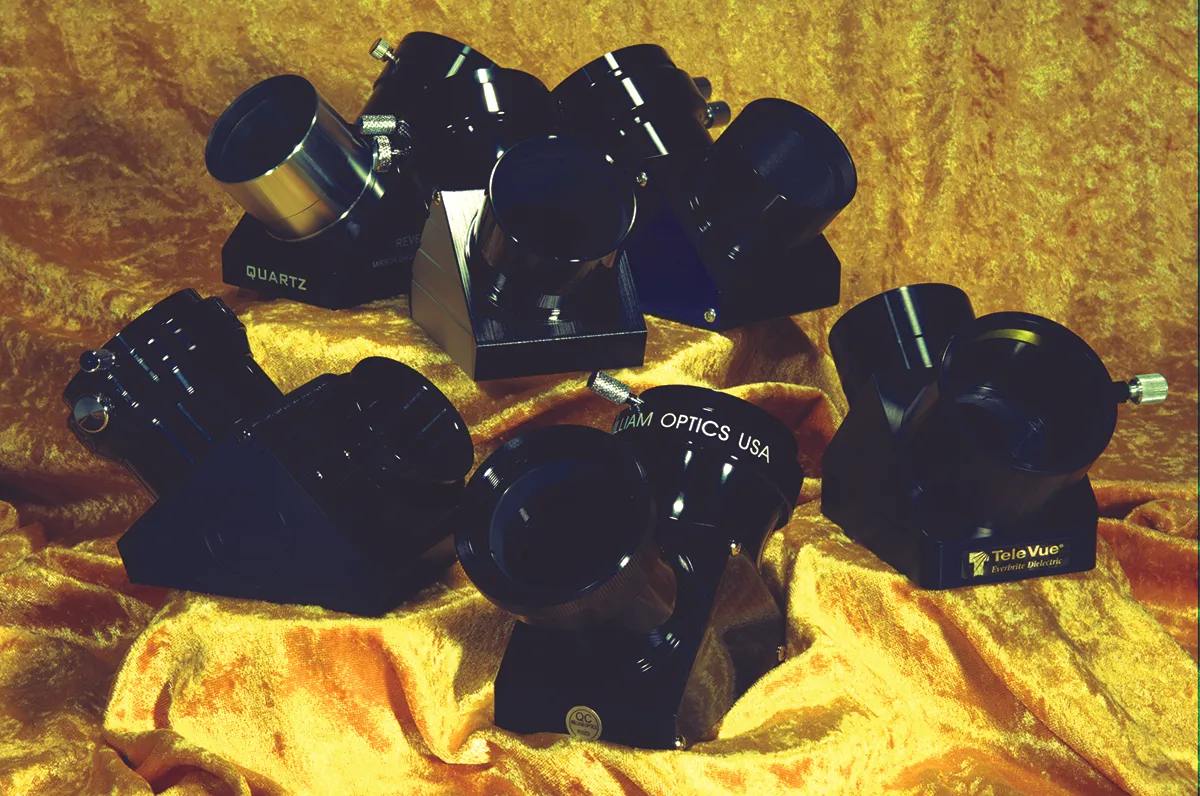
How to test a star diagonal
When testing out a star diagonal to see whether it's worth your hard-earned money, use it to examine both bright and faint objects in the sky.
The brightest object in the sky, the Moon, is a great test for how well baffled the interior of each star diagonal is against stray internal light.
Fainter star fields can be used to assess the dielectric coating.
10 of the best star diagonals
1
Celestron 90° 1.25-inch Dielectric Star Mirror Diagonal

- Buy now from PicStop
The Celestron Dielectric Star Diagonal is a 1.25-inch diagonal that features a twist lock instead of the traditional thumb screws seen on most models.
This is a nice touch, as it can help prevent the scratching of eyepieces that often occurs when using thumb screw models.
The twist lock also houses any 1.25-inch eyepiece and centres it in the diagonal.
Optics boast 58 layers of dielectric coatings to provide a 99% reflective surface, while an integrated barrel stop helps keep accessories with long barrels from hitting the mirror.
The black-painted interior helps prevent glare from creeping into your views, which will be good news for many observers.
2
Sky-Watcher 2-inch Deluxe Dielectric Coated 90° Star Diagonal

The Sky-Watcher Deluxe is a straightforward diagonal – designed to put eyepieces at a comfortable angle to look through – that uses dielectric coating to give the maximum light transmission of 99%.
In our testing we found it gave brighter views when compared with our basic test 2-inch diagonal.
The internal baffling was good, with little in the way of internal reflections when we viewed the Moon.
The stars remained crisp, but, when compared with some of the others on test, we had an impression of slightly less contrast in deep sky objects such as the Great Globular Cluster, M13, and the galaxy pair M81 and 82.
As we slotted our 2-inch eyepiece in and out, we noticed how the Sky-Watcher diagonal showed good quality-machining, combining a sleek design with smooth operation.
The diagonal can take 2-inch filters in the threaded barrel, which is useful if you intend on using a light pollution filter.
Packaged in a basic black box, the diagonal does its job well. This is a good overall performer with no frills. It's simple and easy to use.
3
Altair 2-inch Positive Lock 90° Prism Diagonal
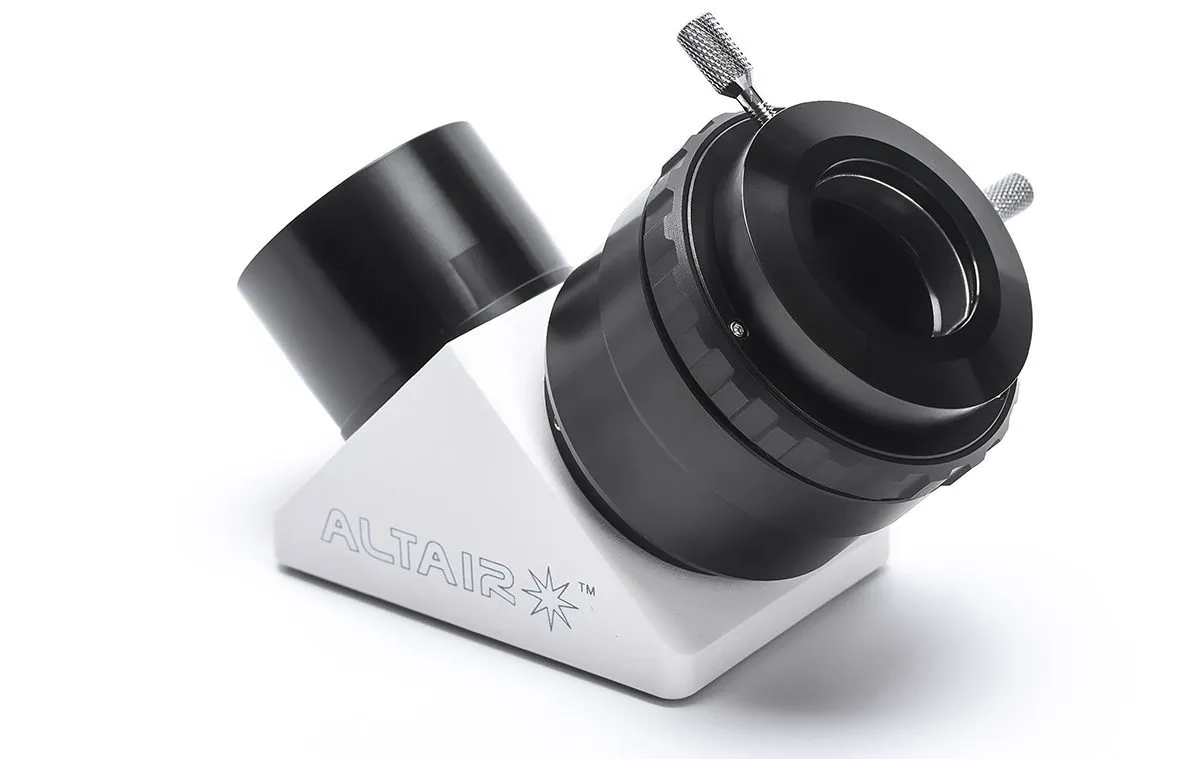
The Altair Positive Lock's body really stands out from most other black-coated diagonals.
It will certainly be easy to spot in the dark and you won’t bump into it with your head.
It’s a heavy diagonal at 646g and feels like a good sturdy piece of kit.
In our practical tests the Altair diagonal gave wonderful colour rendition of Arcturus, the brightest star in the constellation of Boötes.
The internal baffle’s matte coating did its job: we had good contrast in our views of the deep sky and the Moon showed no internal reflections.
A real plus is the Positive Lock knurled ring which, when turned, locks the eyepiece firmly in position. It was so efficient that we felt the supplied thumbscrew was almost unnecessary.
A nice touch, the ring held our large, heavy eyepiece perfectly.This is an excellent performer.
4
Explore Scientific Diagonal Mirror 2-inch
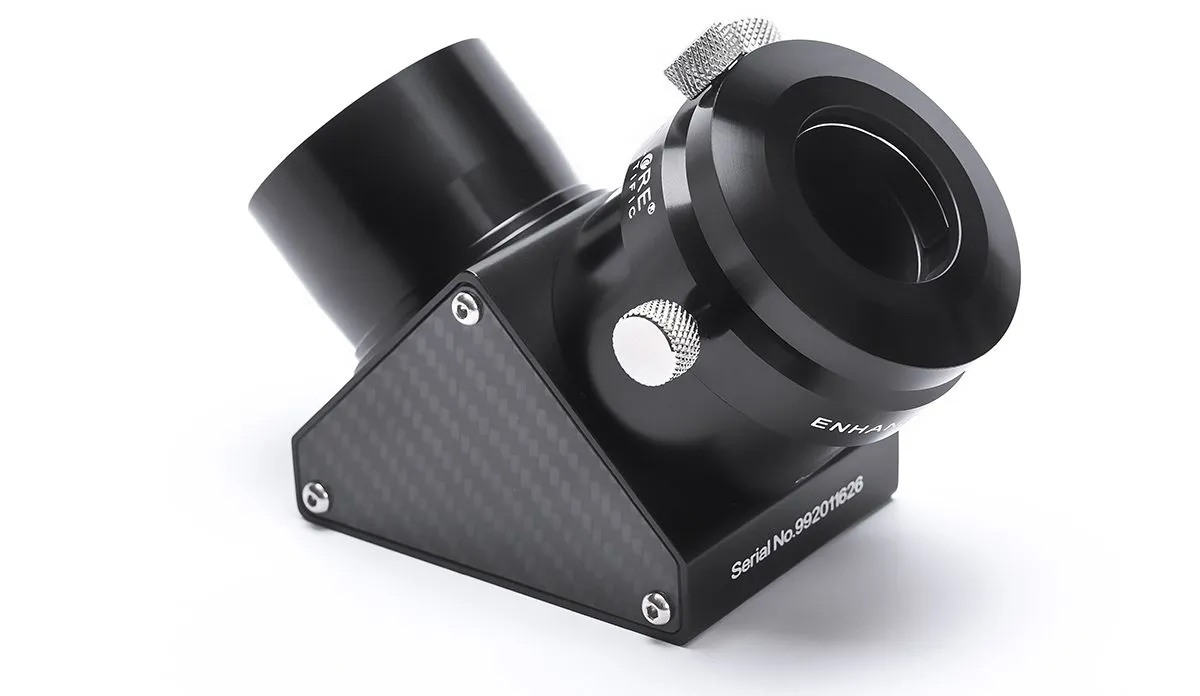
The Explore Scientific boasts a reflectivity of 99% due to the dielectric, coated mirror.
It weighs in pretty light at 466g, yet it's sturdy and could easily handle our 21mm Ethos eyepiece, which itself weighs just over 1kg.
Unlike many other models it uses two thumbscrews to apply pressure to the brass compression rings that hold the 2-inch fit eyepiece firmly in place.
It uses a single thumbscrew to hold 1.25-inch fit eyepieces via a compression ring on the adaptor.
The contrast on our various test subjects was good and showed how well the matte coating inside cuts down on internal reflections.
The only surprise was that the mirror juts out a little into the end barrel clipping the view, yet visually we didn’t notice any detrimental effects.
The Explore Scientific 2-inch diagonal is supplied in a very smart well-padded box that sets it apart from many others on the market.
5
Revelation Diagonal Dielectric 99% Quartz 2-inch
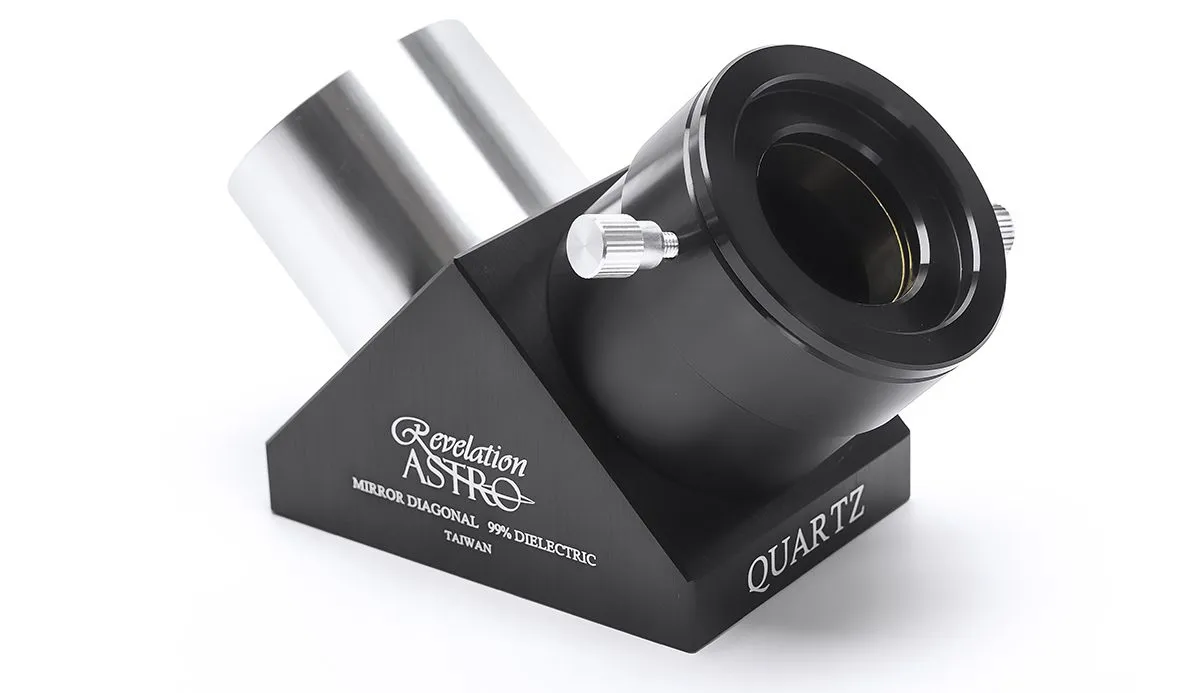
The Revelation Diagonal Dielectric Quartz is solidly built with a practical design and features a silver end barrel that really helps it to stand out.
It also features an unusual recessed 1.25-inch adaptor that allows eyepieces to have a lower profile, instead of jutting out like many other diagonals.
The internal baffle coating surprised us as it appears to be bery shiny, suggesting the possibility of internal reflections when viewing the Moon.
However, we saw little detrimental effect when we tested it with our lunar target and bright stars.
The dielectric coating has a strong green hue, yet the contrast when viewing deep sky targets – such as a wide-field view of the Orion’s Belt and Sword region – was very enjoyable.
Despite being midway in weight and not the lightest we've ever tested, the Revelation performed well visually.
The only concern was that the 1.25-inch adaptor felt a little tight when it was taken out and put back into the telescope focuser.
6
Omegon Star Diagonal with 99% reflection, 2-inch

The Omegon's overall look is stylish with a sleek curved neck, and a nicely fitting and smooth-to-use 1.25-inch adaptor that uses brass compression rings to hold the eyepiece in place.
We found this did the job nicely, with no sign of slippage when our scope was aimed at targets high in the sky.
The internal baffling was matte black and when we looked at the Moon we saw little in the way of internal reflections, showing the internal dark coating was doing its job.
We did suspect that the contrast on deep sky targets was a little less compared with others that we've used, but we felt the effect was minimal and did not really detract from the views.
The dielectric-coated mirror was well positioned and did not protrude into the end barrel, allowing a clear view.
7
William Optics 2-inch Dura Bright Dielectric Carbon Fibre
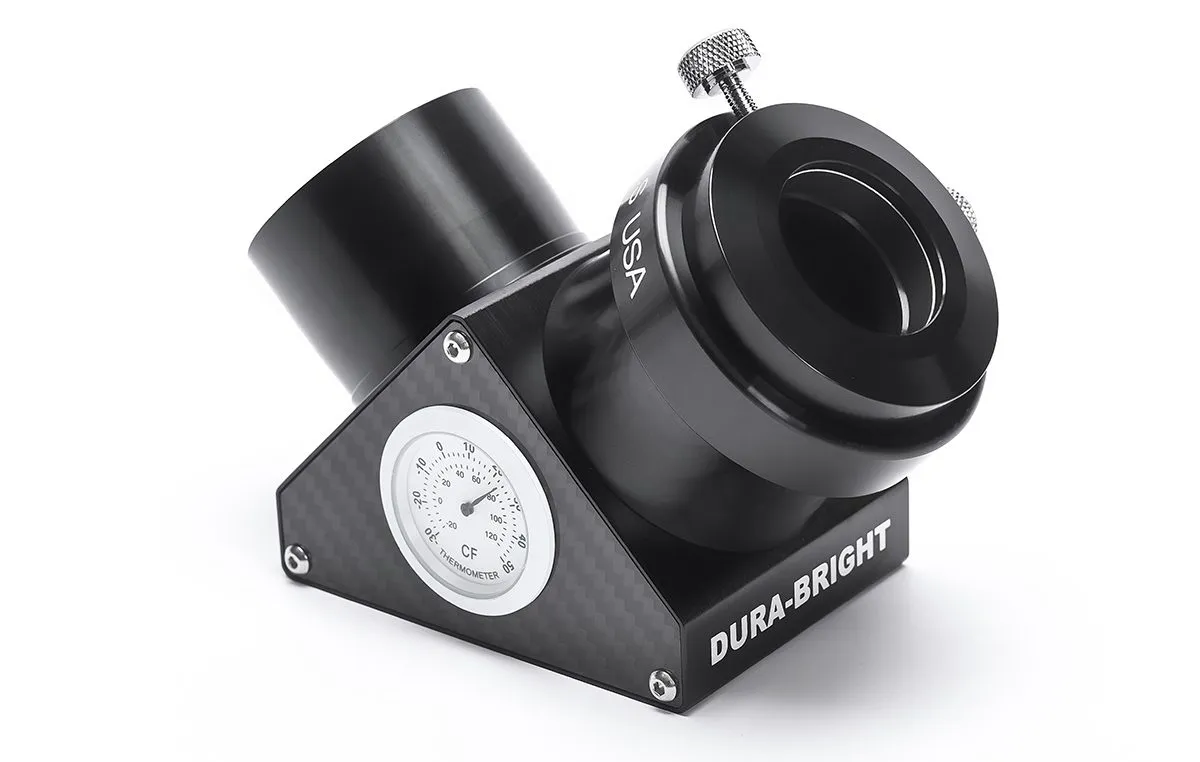
William Optics has a reputation for manufacturing high quality telescopes and accessories and its Dura Bright 2-inch Dielectric Carbon Fibre diagonal lives up to this reputation.
It exudes quality and is supplied in a well-padded plain black box.
The end barrel is threaded internally for 2-inch filters while the internal baffle coatings are matte black with little, if any, sign of reflections or loss of contrast when used on the Moon, bright stars or deep sky.
We found that eyepieces were easy to slot in and take out, regardless of either 2- or 1.25-inch fit, and it held them rigidly, especially considering the weight of our 21m Ethos eyepiece used in the review.
A useful addition is the thermometer on one side which is handy when using the diagonal for imaging, as you can control the camera temperature more accurately by referring to it.
8
William Optics 2-inch Carbon Fibre Dielectric Diagonal
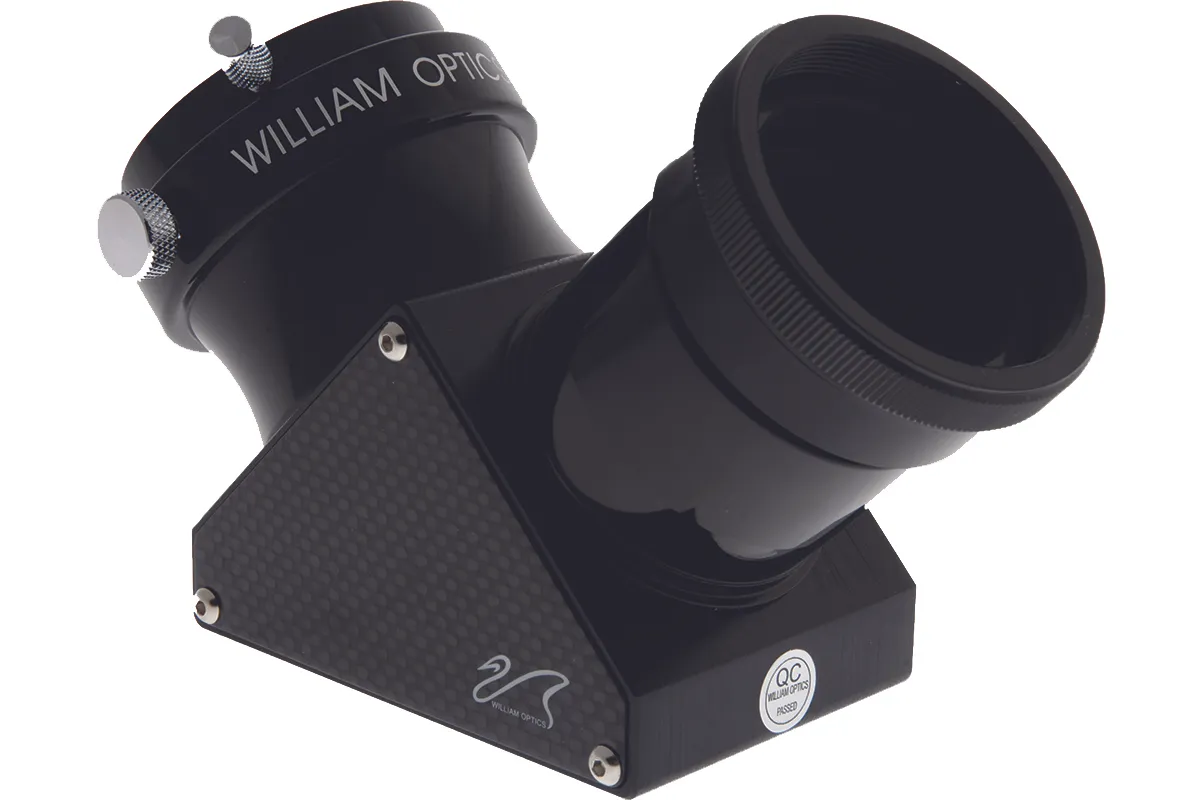
William Optics’ reputation for high quality and competitive prices – two features that are usually mutually exclusive – is done no disservice by this diagonal.
As well as the carbon fibre finish, the diagonal is also available in standard form.
The William Optics unit has no shortfalls. Optically and mechanically it's excellent and an SCT thread adaptor is included in the box.
9
Celestron XLT 2-inch diagonal
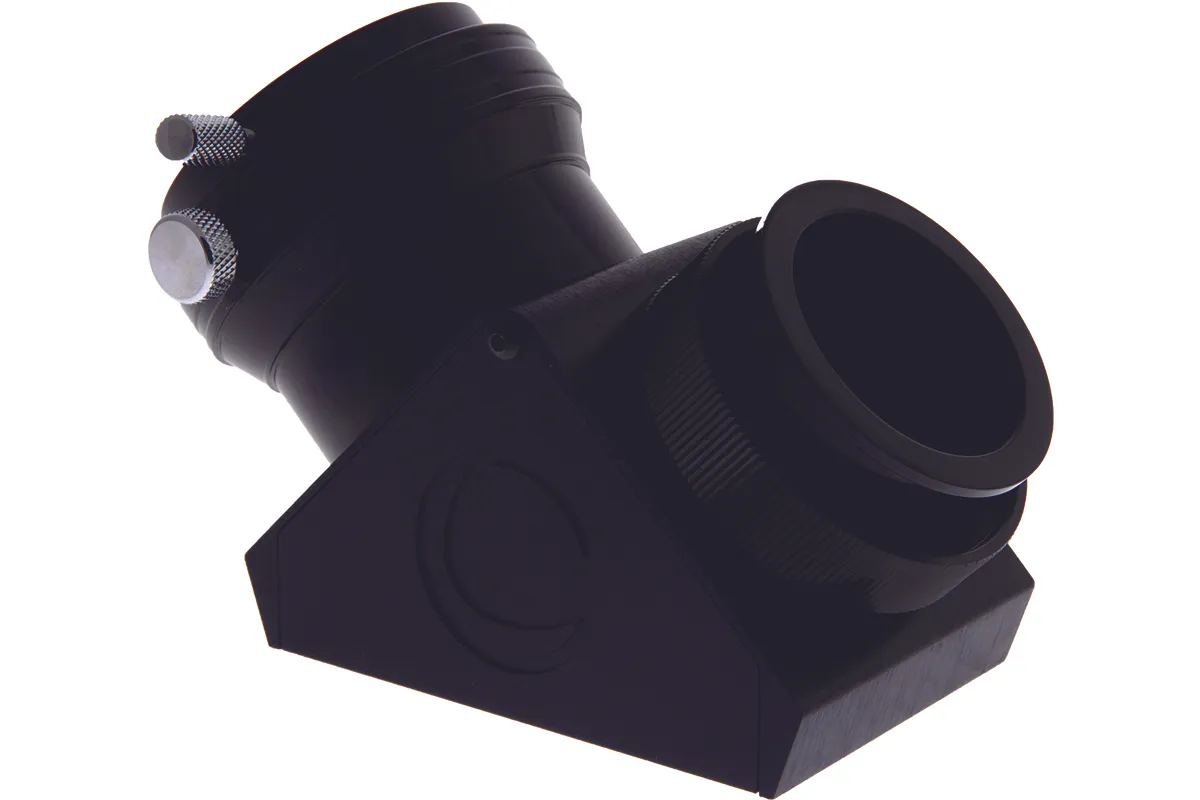
- Buy now from B&H Photo Video
The Celestron XLT 2-inch comes in a truly magnificent foam-padded aluminium case.
Designed for primarily Celestron Schmidt-Cassegrain/Edge HD telescopes, the diagonal threads to the rear cell and forms a good connection, which keeps the optical path accurately aligned as well.
This is good news for both visual observers and astrophotographers.
Included in the package is a 2-inch to 1.25-inch adapter.
This is a really nice quality star diagonal that would be worth adding to your accessory collection if you have a Celestron SCT.
On faint star fields, light transmission is excellent, but the inside it's a bit too shiny when tested on the Moon.
However, build quality is excellent so this unit will not disappoint.
Read our full Celestron XLT 2-inch diagonal review.
10
Meade Series 5000 Dielectric Diagonal
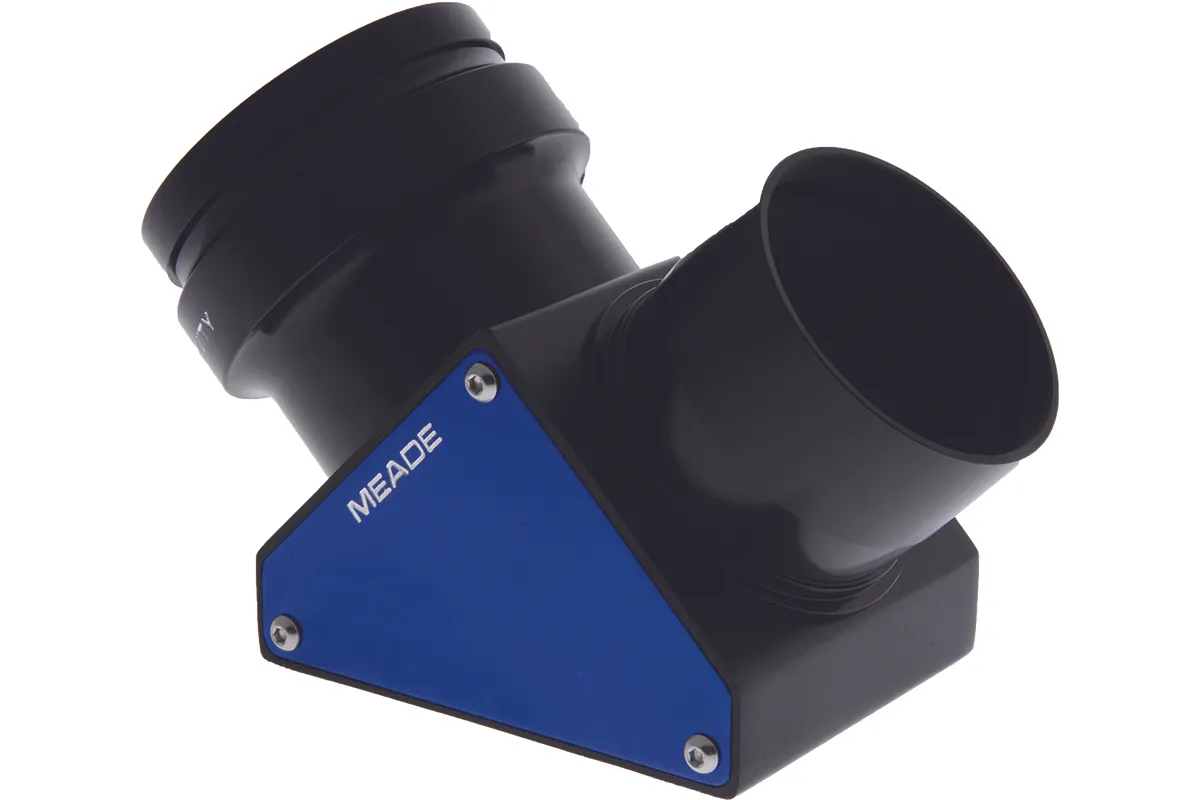
- Buy now from Orion Telescopes
The Meade Series 5000 Dielectric Diagonal is a handsomely constructed piece of engineering with a sculpted, modern appearance and nice oversized, chunky lock screws.
The high transmission dielectric coatings perform well and there are only minor internal reflections when viewing the Moon.
It comes in a substantial padded box and weighs 465g – fairly typical for diagonals.
Overall this is a stylish accessory.
These reviews originally appeared in the June 2019 issue of BBC Sky at Night Magazine.
